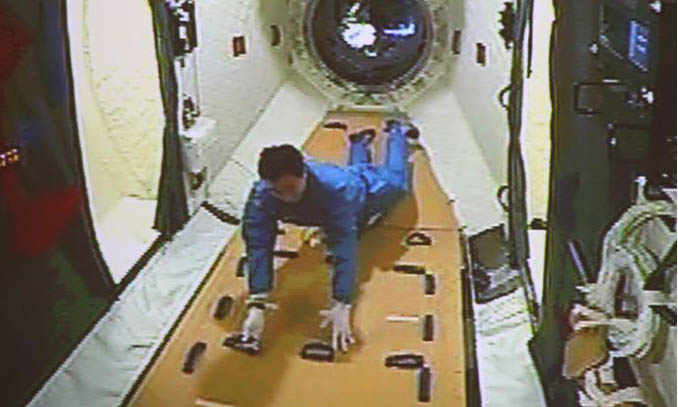Shenzhou-9 success marks major progress

China's Shenzhou-9 manned spacecraft successfully docked with the Tiangong-1 space lab module yesterday, reflecting major progress in China's space cause and enhancing China's technological ability. Many Chinese are concerned with the progress being made in outer space, but seldom see it as a milestone. Because Chinese know clearly that China has a long way to go to catch up with the advanced technologies of the world's first-class level. The Shenzhou-9 is just a new step.
The gap between China and developed Western countries frustrates Chinese. The technological progress that China is most proud of is realized under the guidance of Western standards and achievements. China is at a stage where it is learning from and chasing world-class technology.
But admittedly, China is a latecomer enjoying its fastest development in recent decades. Despite China's overall backwardness, China's progress is all-around. China's technological progress is obvious from its achievements in space.
Chinese society won't get greatly excited by a single big event any more. The days when the whole country celebrated the completion of the Nanjing Yangtze River Bridge or the successful launch of the first man-made satellite are gone. Instead, it's scandals and negative news that often stir the whole of society.
China hasn't created a favorable political environment for it to chase internationally advanced technological levels. Any technological developments made during the Cold War had concrete political purposes and were open to the public. But nowadays, it is impossible for China to combine scientific research with politics, lest it stimulate other powers. China often keeps a low profile over its big programs.
The attention lavished on China doesn't match its real capability. The title of No.2 world economy makes it a world target. The country's economic and scientific research quality is still low and cannot compete with that of the US. This will be a long-term bother for China.
China needs more breakthroughs such as the ones made by the Shenzhou-9 spacecraft and Jiaolong submersible. One day, China may advance to the cutting edge of science and technological research. Before that day arrives, the country will be a target of criticism and mockery as it follows the footsteps of the West. We need to be perseverant.
China is at a crossroad. It is difficult to tell whether the country can fully restore its former cultural glory. At any rate, the country is too big and overall modernization takes a long time.
But success in every specific exploration will gather the necessary confidence. It needs the belief that each step forward will lead to significant progress. And there is no ready-made achievement for this.
Although the Tiangong-1 is not a space station in the full sense, China has obviously tackled the primary difficulties involved in building a space station. It is of comprehensive importance to the country.
Chinese society must be unified and have the ability to execute these policies. It is in the interests of every Chinese.
Related Report:
Three Chinese astronauts floated into the orbiting Tiangong-1 yesterday afternoon following the successful docking of Shenzhou-9 with the space lab module earlier, marking the commencement of a series of science experiments inside.
Confused youth should look up to Shenzhou spirit
The Shenzhou spirit is a sharp contrast to some modern social problems such as fraud, corruption and twisted values.